A team of physicists has devised a simple way to measure the duration of a bizarre phenomenon called quantum tunneling.
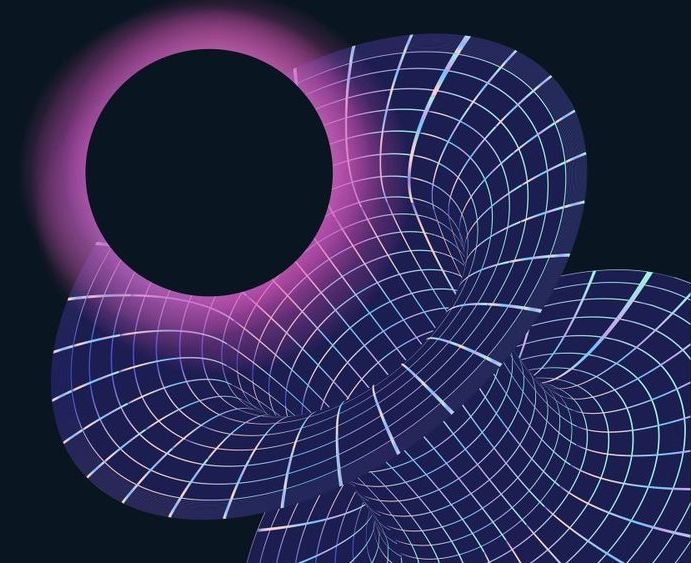


NUS physicists have demonstrated the control of magnetism in a magnetic semiconductor via electrical means, paving the way for novel spintronic devices.
Semiconductors are the heart of information-processing technologies. In the form of a transistor, semiconductors act as a switch for electrical charge, allowing switching between binary states zero and one. Magnetic materials, on the other hand, are an essential component for information storage devices. They exploit the spin degree of freedom of electrons to achieve memory functions. Magnetic semiconductors are a unique class of materials that allow control of both the electrical charge and spin, potentially enabling information processing and memory operations in a single platform. The key challenge is to control the electron spins, or magnetisation, using electric fields, in a similar way a transistor controls electrical charge. However, magnetism typically has weak dependence on electric fields in magnetic semiconductors, and the effect is often limited to cryogenic temperatures.
A research team led by Prof Goki EDA from the Department of Physics and the Department of Chemistry, and the Centre for Advanced 2-D Materials, NUS, in collaboration with Prof Hidekazu KUREBAYASHI from the London Centre for Nanotechnology, University College London, discovered that the magnetism of a magnetic semiconductor, Cr2Ge2Te6, shows exceptionally strong response to applied electric fields. With electric fields applied, the material was found to exhibit ferromagnetism (a state in which electron spins spontaneously align) at temperatures up to 200 K (−73°C). At such temperatures, ferromagnetic order is normally absent in this material.
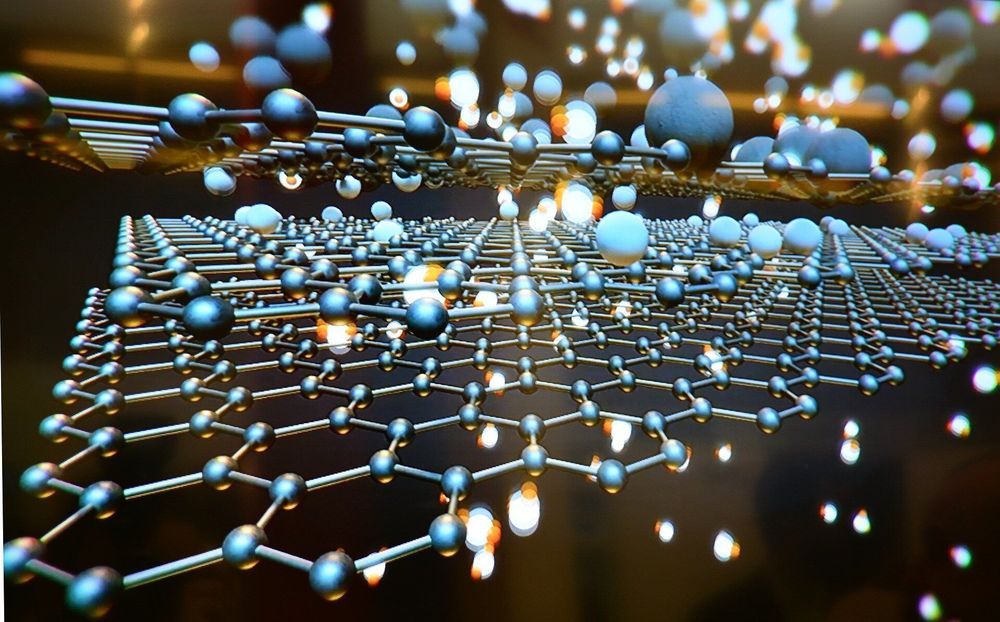
O,.o well then anything could be a computer even a mushroom or a rock :3.
A complex process can modify non-magnetic oxide materials in such a way to make them magnetic. The basis for this new phenomenon is controlled layer-by-layer growth of each material. An international research team with researchers from Martin Luther University Halle-Wittenberg (MLU) reported on their unexpected findings in the journal Nature Communications.
In solid-state physics, oxide layers only a few nanometres thick are known to form a so-called two-dimensional electron gas. These thin layers, separated from one another, are transparent and electrically insulating materials. However, when one thin layer grows on top of the other, a conductive area forms under certain conditions at the interface, which has a metallic shine. “Normally this system remains non-magnetic,” says Professor Ingrid Mertig from the Institute of Physics at MLU. The research team has succeeded in controlling conditions during layer growth so that vacancies are created in the atomic layers near the interface. These are later filled in by other atoms from adjoining atomic layers.
The theoretical calculations and explanations for this newly discovered phenomenon were made by Ingrid Mertig’s team of physicists. The method was then experimentally tested by several research groups throughout Europe—including a group led by Professor Kathrin Dörr from MLU. They were able to prove the magnetism in the materials. “This combination of computer simulations and experiments enabled us to decipher the complex mechanism responsible for the development of magnetism,” explains Mertig.

For the first time, scientists have detected neutrinos coming from the Sun’s core that got their start via the CNO process, an until-now theorized type of stellar nuclear fusion.
This is really cool, but it’ll take a bit of explaining.

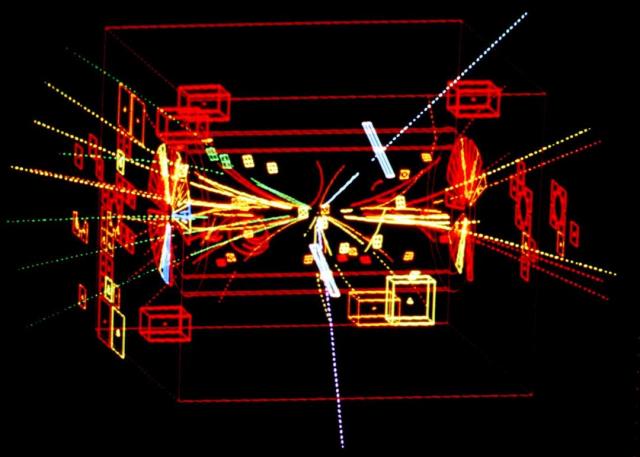
In 1979, CERN decided to convert the Super Proton Synchrotron (SPS) into a proton–antiproton collider. A technique called stochastic cooling was vital to the project’s success as it allowed enough antiprotons to be collected to make a beam.
The first proton–antiproton collisions were achieved just two years after the project was approved, and two experiments, UA1 and UA2, started to search the collision debris for signs of W and Z particles, carriers of the weak interaction between particles.
In 1983, CERN announced the discovery of the W and Z particles. The image above shows the first detection of a Z0 particle, as seen by the UA1 experiment on 30 April 1983. The Z0 itself decays very quickly so cannot be seen, but an electron–positron pair produced in the decay appear in blue. UA1 observed proton-antiproton collisions on the SPS between 1981 and 1993 to look for the Z and W bosons, which mediate the weak fundamental force.


Swarm intelligence (SI) is concerned with the collective behaviour that emerges from decentralised self-organising systems, whilst swarm robotics (SR) is an approach to the self-coordination of large numbers of simple robots which emerged as the application of SI to multi-robot systems. Given the increasing severity and frequency of occurrence of wildfires and the hazardous nature of fighting their propagation, the use of disposable inexpensive robots in place of humans is of special interest. This paper demonstrates the feasibility and potential of employing SR to fight fires autonomously, with a focus on the self-coordination mechanisms for the desired firefighting behaviour to emerge. Thus, an efficient physics-based model of fire propagation and a self-organisation algorithm for swarms of firefighting drones are developed and coupled, with the collaborative behaviour based on a particle swarm algorithm adapted to individuals operating within physical dynamic environments of high severity and frequency of change. Numerical experiments demonstrate that the proposed self-organising system is effective, scalable and fault-tolerant, comprising a promising approach to dealing with the suppression of wildfires – one of the world’s most pressing challenges of our time.
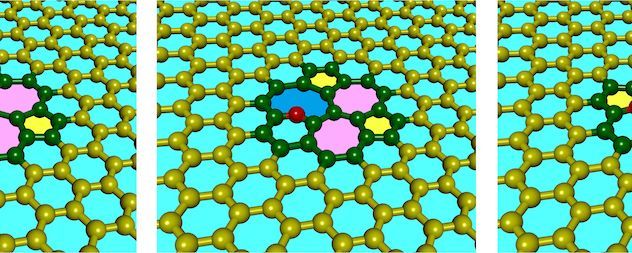
Graphene and other carbon materials are known to change their structure and even self-heal defects, but the processes involved in these atomic rearrangements often have high energy barriers and so shouldn’t occur under normal conditions. An international team of researchers in Korea, the UK, Japan, the US and France has now cleared up the mystery by showing that fast-moving carbon atoms catalyse many of the restructuring processes.
Graphene – a carbon sheet just one atomic layer thick – is an ideal system for studying defects because of its simple two-dimensional single-element structure. Until now, researchers typically explained the structural evolution of graphene defects via a mechanism known as a Stone-Thrower-Wales type bond rotation. This mechanism involves a change in the connectivity of atoms within the lattice, but it has a relatively large activation energy, making it “forbidden” without some form of assistance.
Using some of the best transmission electron microscopes available, researchers led by Alex Robertson of Oxford University and Kazu Suenaga of AIST Tsukuba found that so-called “mediator atoms” – carbon atoms that do not fit properly into the graphene lattice – act as catalysts to help bonds break and form. “The importance of these rapid, unseen ‘helpers’ has been previously underestimated because they move so fast and have been next-to-impossible to observe,” says co-team leader Christopher Ewels, a nanoscientist at the University of Nantes.
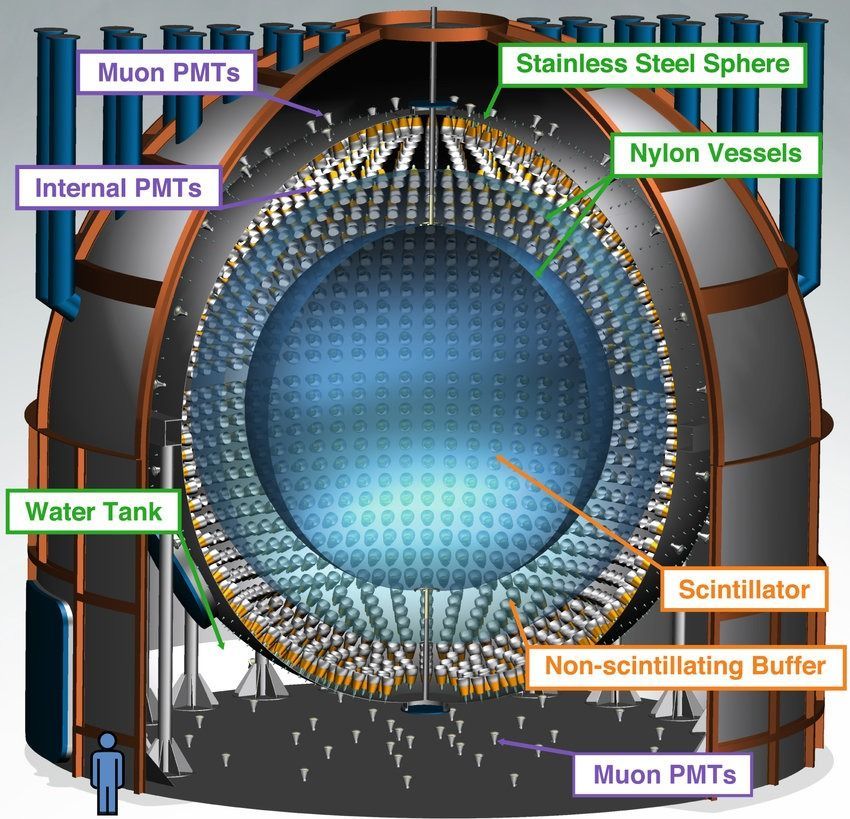
A team of researchers working on the Borexino project has announced that they have observed carbon/nitrogen/oxygen (CNO) fusion neutrinos from the sun for the first time. Co-spokesman for the group, Gioacchino Ranucci, a physicist at the University of Milan, announced the observation at this year’s virtual Neutrino 2020 conference.
The Borexino solar-neutrino project is an experiment being conducted underground at Gran Sasso National Laboratories in Italy—it has been in operation since 2007. Its mission is to observe neutrinos that are emitted from the sun via two kinds of fusion reactions. The laboratory is located beneath a kilometer of rock to filter noise. Inside, it houses a huge balloon made of nylon and filled with 278 tonnes of liquid hydrocarbons surrounded by water in a tank. The temperature inside the tank is kept constant by heat exchangers and a blanket cover. Photon sensors line the tank. Neutrinos can be observed when they collide with electrons inside the balloon, creating a tiny flash. The researchers determine the characteristics of the flashes, information that can be used to isolate their source.
Researchers on the project observed neutrinos from a type of fusion reaction called a proton-proton chain back in 2012—they are believed to represent 99 percent of the energy released from the sun. Spotting neutrinos produced during CNO reactions has presented more of a challenge because there are far fewer of them. In both cases, hydrogen is fused into helium. The elements that are part of the reaction are referred to as chains because they allow such reactions to proceed. In his presentation, Ranucci, claimed that the team had “…unraveled the two processes powering the sun.”